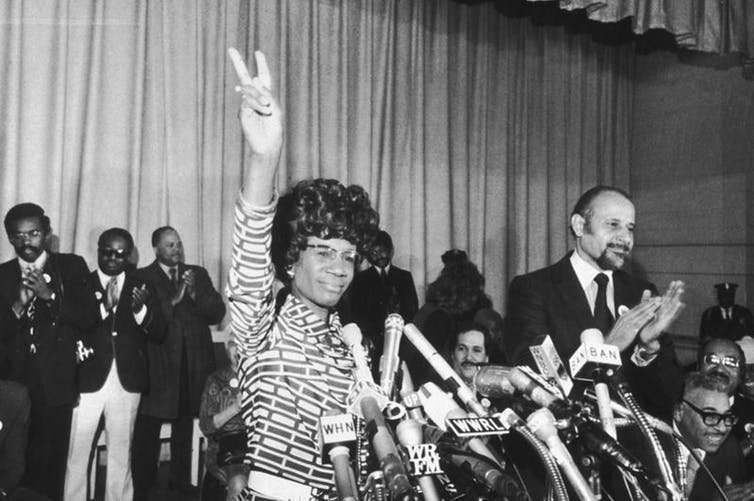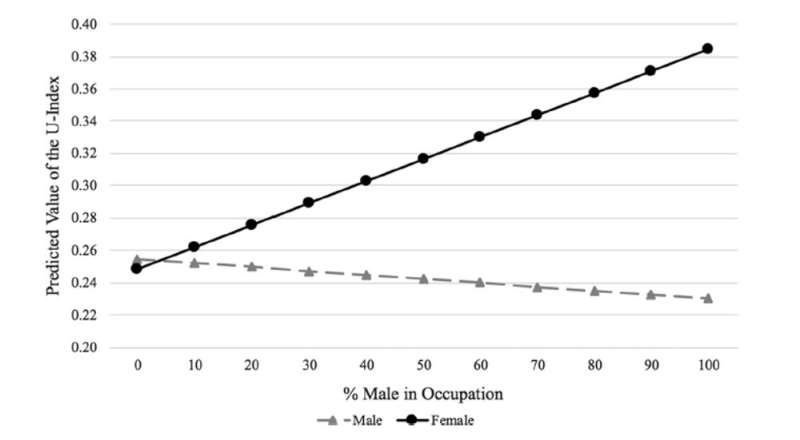Women feel better when they work with other women

The #metoo movement has brought the widespread . . This has been described as "."
I worked on with my colleague from Boston College looks closely at this question of how gender equality is unfolding in the labour force. Most adults spend almost half their waking hours at work, so it is a hugely important part of our lives.
One of the issues we explored was: how are women doing at work? We discovered that women are much happier when they work with other women, as opposed to men.
Women now make up but occupations continue to be .
In the 1970s and 1980s, some progress was made and gender segregation declined, but progress toward more integrated workplaces has .
As of 2016, about half of women or half of men would have to move into a new occupation to . Jobs that are dominated by either sex are often viewed as and form core definitions of masculinity or femininity.
Scorn and ridicule
Throughout , men have defended gender segregation by treating women who enter into male-dominated occupations with scorn and ridicule. Women who cross over into predominantly male jobs are seen as ";" they report feeling and experiencing .

In contrast, .
Women's presence in male-dominated occupations seems to threaten prevailing ideas of masculinity. Men have been observed trying to neutralize this threat by their female co-workers or —not fully women.
Also, , women in male-dominated occupations often hear doubts from their male co-workers about their competence to perform "men's jobs." They encounter negative stereotypes, are subject to higher performance standards and face .
To add to this, these women are deeply and unfair treatment.
found that when women are the minority in the workplace, they experience higher levels of unpleasant feelings at work. To put it into perspective, our statistics indicate that working in occupations with over 90 per cent male workers is associated with a 52 per cent increase in unpleasant feelings for women, compared to working in occupations with less than 10 per cent male workers.
The men are generally fine
How about men? Does the the gender ratio at work effect their affective well-being?

The answer is no. As indicated in the chart above, men's feelings of unpleasantness at work barely change with the gender composition of their occupation.
Although men in female-dominated occupations may be subject to suspicions that they are not "real men," their masculinity and male privilege are maintained through various ways, such as being channeled into male-identified —and typically higher-status —, job tasks or .
In addition, men in female-dominated occupations do not necessarily experience marginalization, because they tend to from their supervisors who are typically men and they are generally who often view male colleagues as bringing status to female-dominated occupations.
Our results clearly show that the unpleasant feelings during work are not merely a by-product of being a numerical minority. Because and value men and qualities associated with masculinity more than they value women and femininity, women's affective well-being suffers from being a minority, whereas men's affective well-being is not affected.
The segregation of men and women in the labour market thus perpetuates gender inequality partly through its impact on the quality of one's daily working life.
Unpleasant feelings lead to bad health
Although unpleasant feelings seem subjective, they are found to .

In fact, workers' unpleasant feelings at work are a key such as absenteeism and turnover. Therefore, the negative feelings that are experienced by women working in male-dominated occupations may discourage many of these women from retaining their jobs.
Thus, by linking women's affective well-being with occupational gender composition, provides important clues as to the at work.
Education and policies needed
In order to revitalize the stalled progress towards gender integration in the workforce, policies need to be developed to improve the experience of female workers in gender-atypical occupations.
For example, organizations and workplaces could implement effective programs that monitor and prevent sexual harassment and bullying at work. There is also a need to promote an organizational culture that ensures people are evaluated based on their performance rather than any gender-related stereotype.
As well, efforts could be devoted to education—reducing the cultural devaluation of women and femininity and, at the same time, promoting a redefinition of masculinity and femininity that breaks the link between gender and innate interests or abilities.
New equity initiatives would continue to positively increase female workers' affective well-being and, in the long run, would serve to build a solid foundation to create gender-friendly work environments.
Provided by The Conversation
This article is republished from under a Creative Commons license. Read the .![]()

















